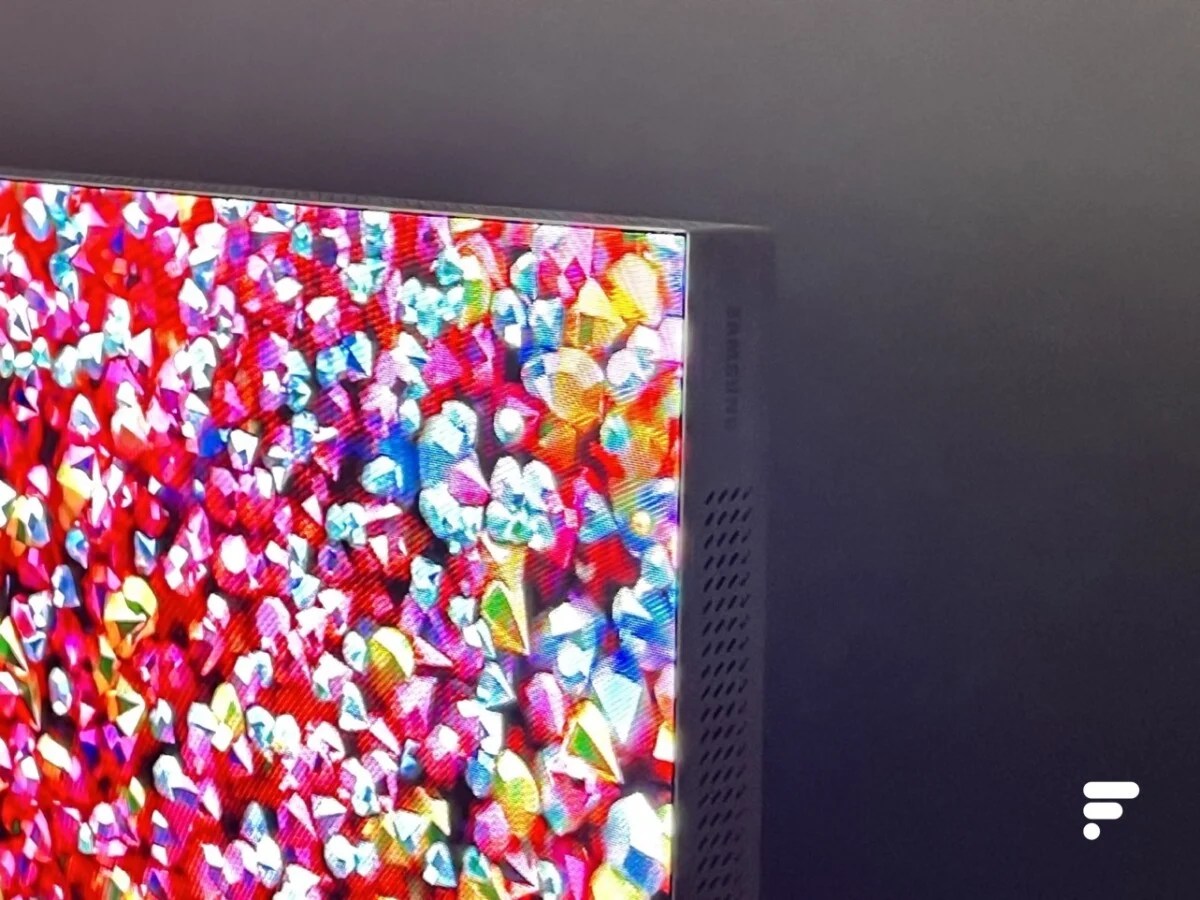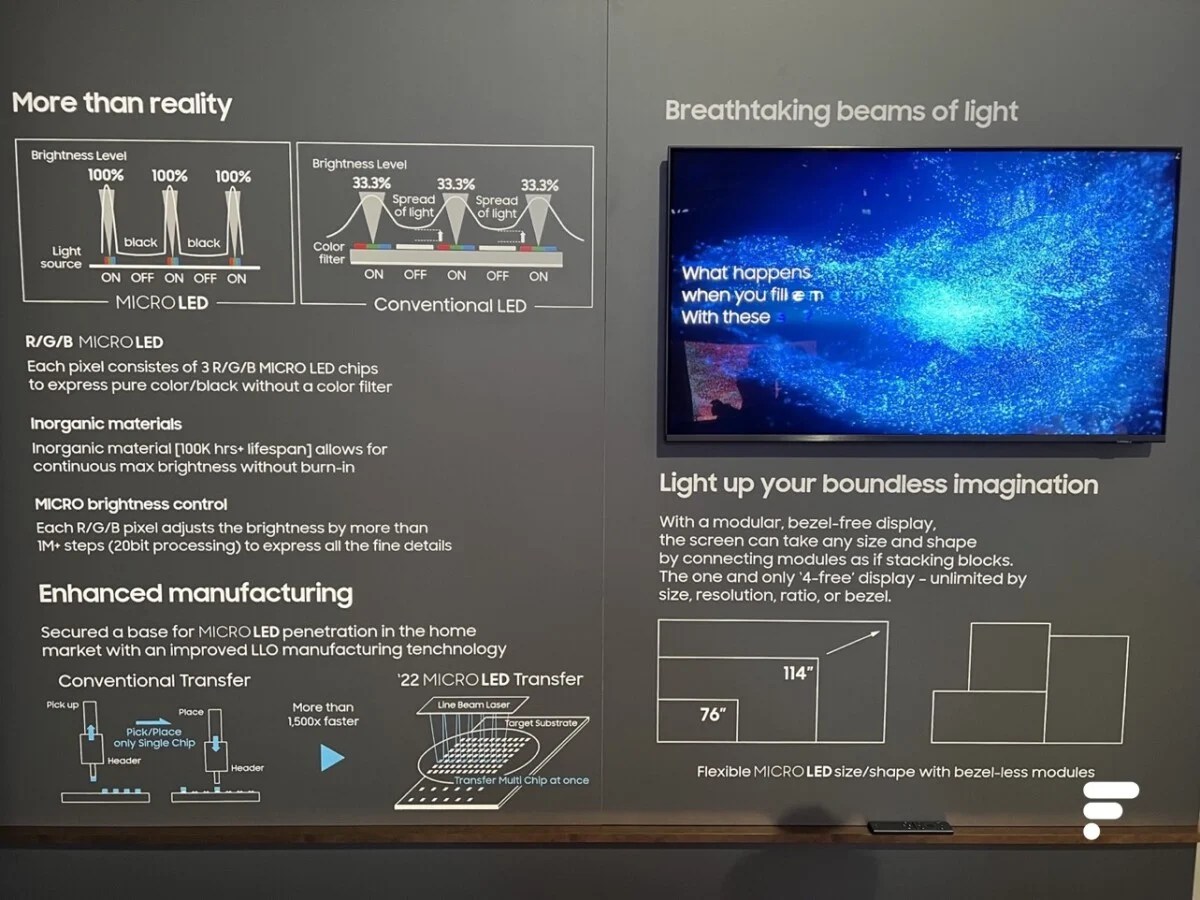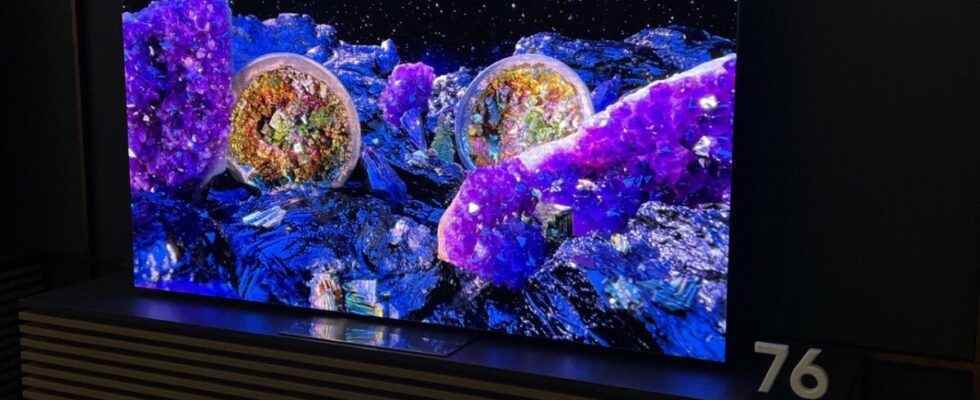Micro LED is often confused with Mini LED and OLED, yet this display technology is different. We took advantage of the IFA to see the latest Micro LED televisions which are now available in five sizes, including a 76-inch format.
The Micro LED has been talked about for years in international trade fairs. Why does this technology fascinate technophiles? In summary, it is self-emissive like OLED (the pixels produce their own light), the brightness peak is very high (one of OLED’s weak points), the response time is less than a microsecond, and finally the resistance and the lifespan are important.
Forget OLED
Well, that’s the theory. We had the chance to see Samsung’s latest Micro LED TVs at IFA, whose format 76 inches which comes closest to a diagonal size that you can install in your living room. This therefore makes it possible to imagine installing a Micro LED TV at home… and this invites us to compare the experience with that of an OLED TV that we now find everywhere.

There is the theory and there is also what one feels when one finds oneself in front of such a screen. It’s stunning. We understand better why the experts are all predicting that the Micro LED will be the display technology of tomorrow. It combines the advantages of OLED technology with that of conventional LED LCD TVs. Concretely, the colors are rich, the brightness is impressive and the contrast is deep. But what struck us was the ability of this panel to not reflect any light.
It’s simple, the viewing angles are just perfect. It is all the more impressive that, unlike OLED, we do not suffer from any reflection here. Finally, “almost», in the sense that we even went so far as to position an LED flash 5 centimeters from the screen.
25 million sub-pixels for 4K, 100 million for 8K
In addition, everything looks extremely thin and sharp to us. What you actually see are 25 million tiny LEDs to form a panel in 4K definition, all these LEDs are perfectly aligned and carefully calibrated.
Apparently, from the exchanges that I have been able to have, it is extremely difficult to obtain mass production. When you imagine that an 8K resolution panel of the same size requires even smaller LED sub-pixels – and 100 million LED sub-pixels. We understand the difficulty of development that the Micro LED poses to Samsung.

Samsung also explains that this Micro LED TV would have a brightness as high as the LCD LED. We are talking here about a brightness of up to 4000 nits, four times more than the best OLED panels. Currently, Micro LED panels sold would still be far from reaching the level of brightness of LED LCD panels, but they do better than OLED.
Another key technical characteristic of Micro LEDs is their inorganic nature, which gives them a longer and more consistent lifespan than OLEDs. Obviously, we cannot observe it on the Samsung stand. In any case, the Korean manufacturer claims that its Micro LED tiles will last 100,000 hours, or more than 11 years of continuous use.
They are also said to be very energy efficient, at least in part because they don’t need to be lit through a color filter. The light from the LEDs hits the eyes directly, so it’s brighter with less effort.
Future-proof technology
Until now, these screens were gigantic, rather dedicated to the world of professional audiovisual, and above all very very very expensive. The 99-inch version marketed at Fnac is overpriced, count 1,000 euros for 1 inch… and therefore around 100 to 150,000 euros for a television. It’s unreachable.
It will therefore take several years to hope to buy a Micro LED screen. But, after seeing this 76-inch television, we can say that this technology has it all, and will probably make us forget OLED.
To follow us, we invite you to download our Android and iOS application. You can read our articles, files, and watch our latest YouTube videos.
